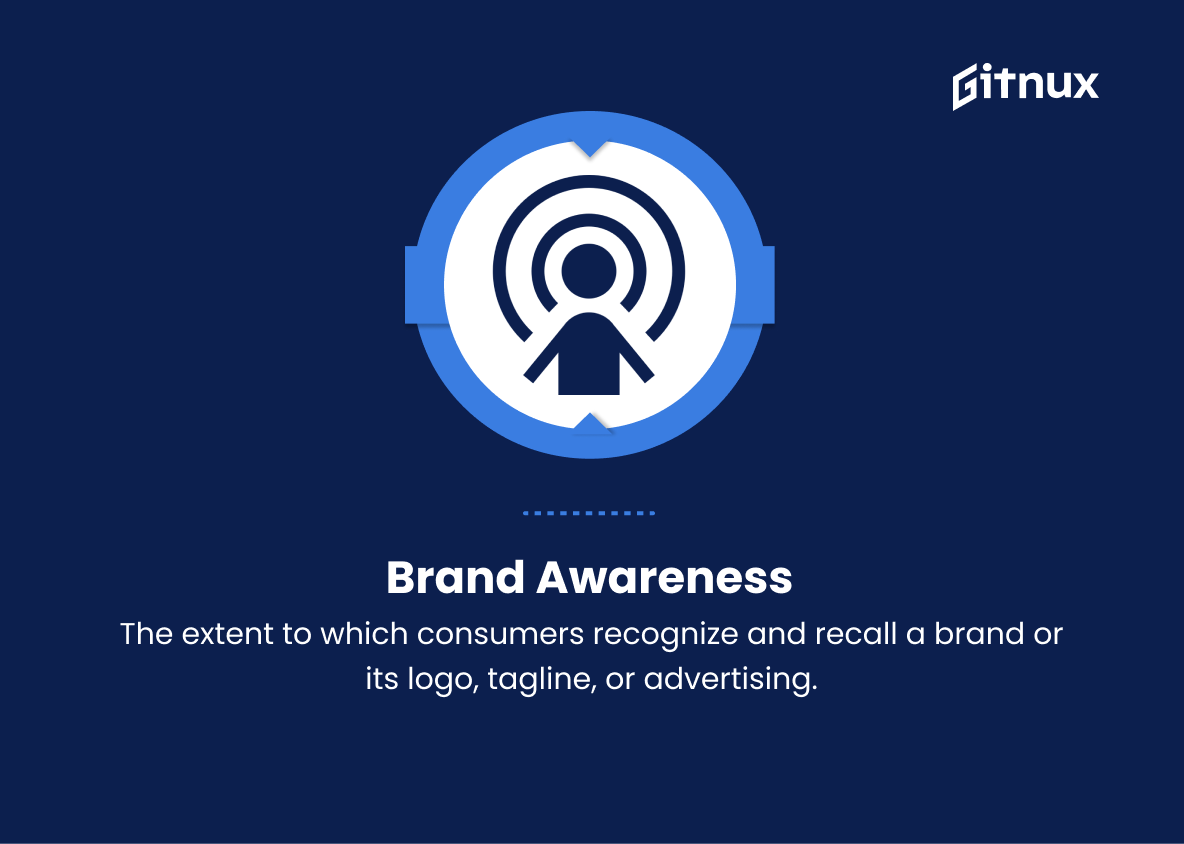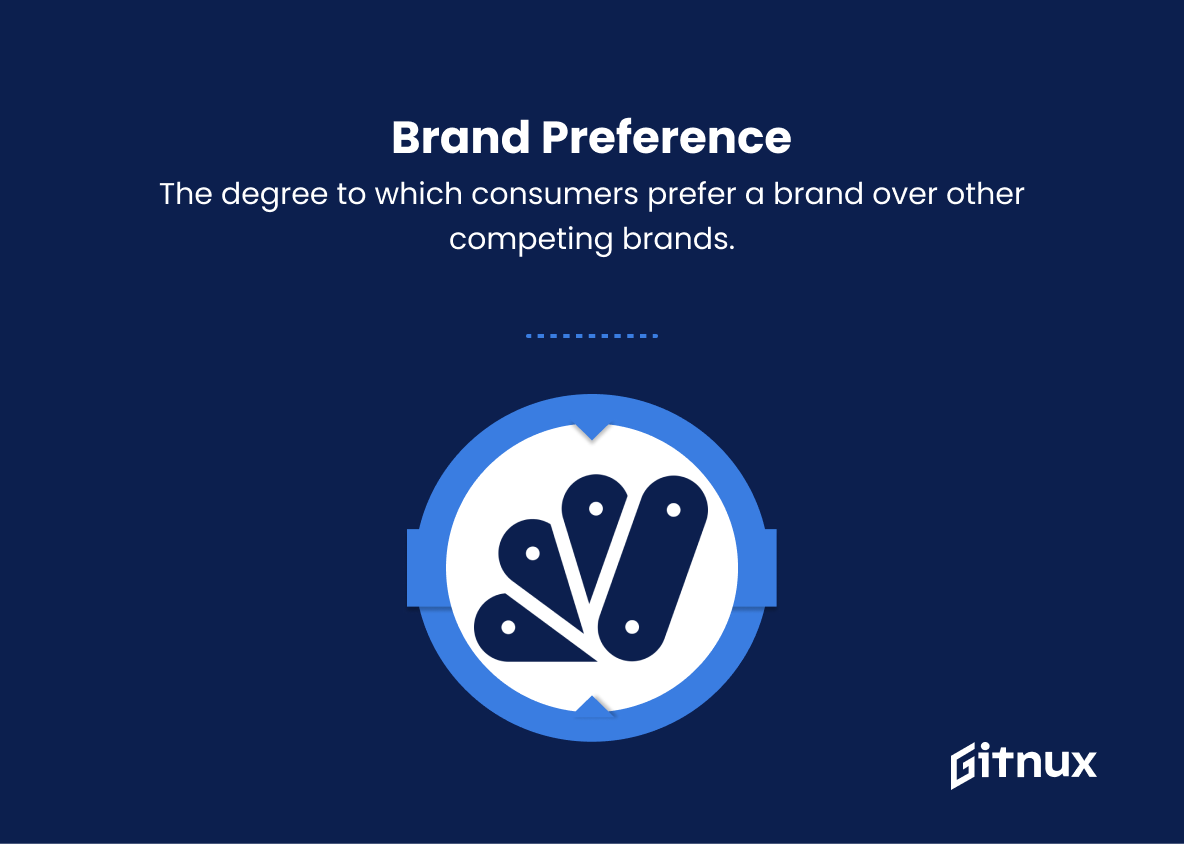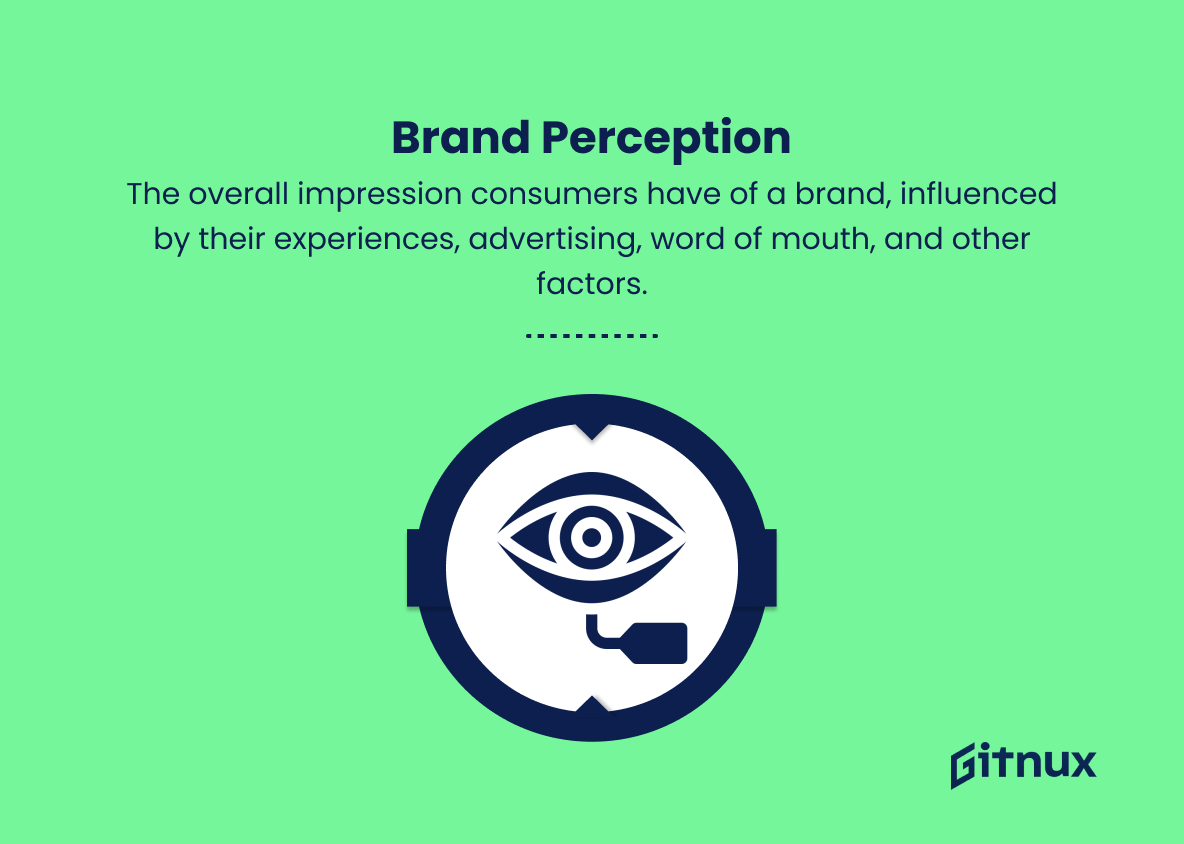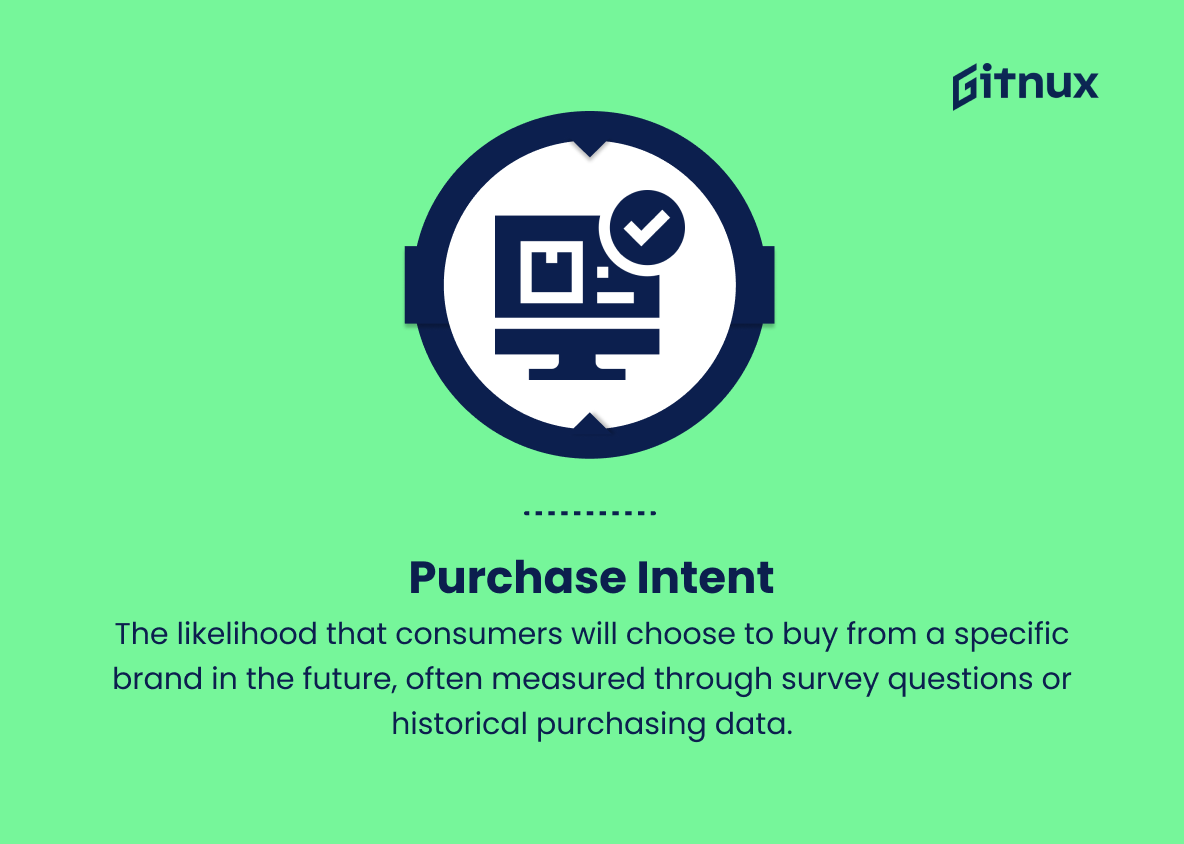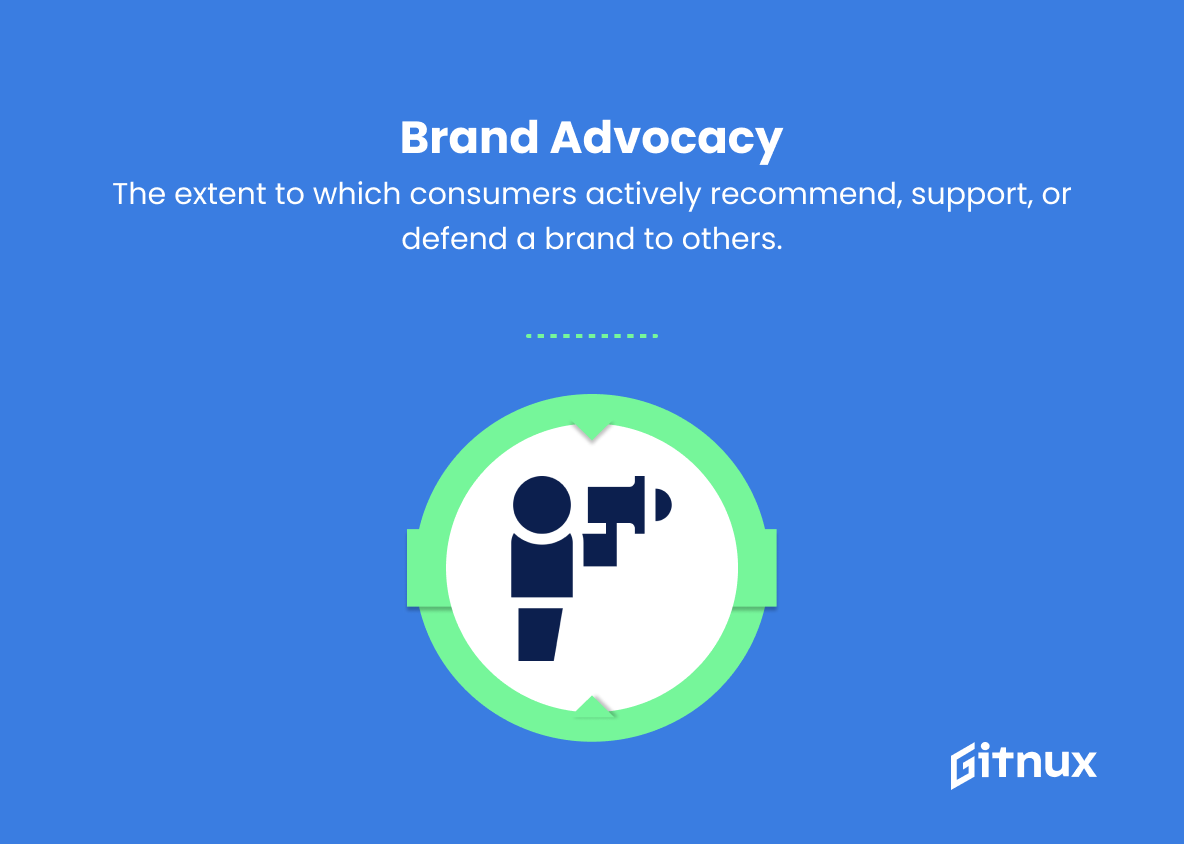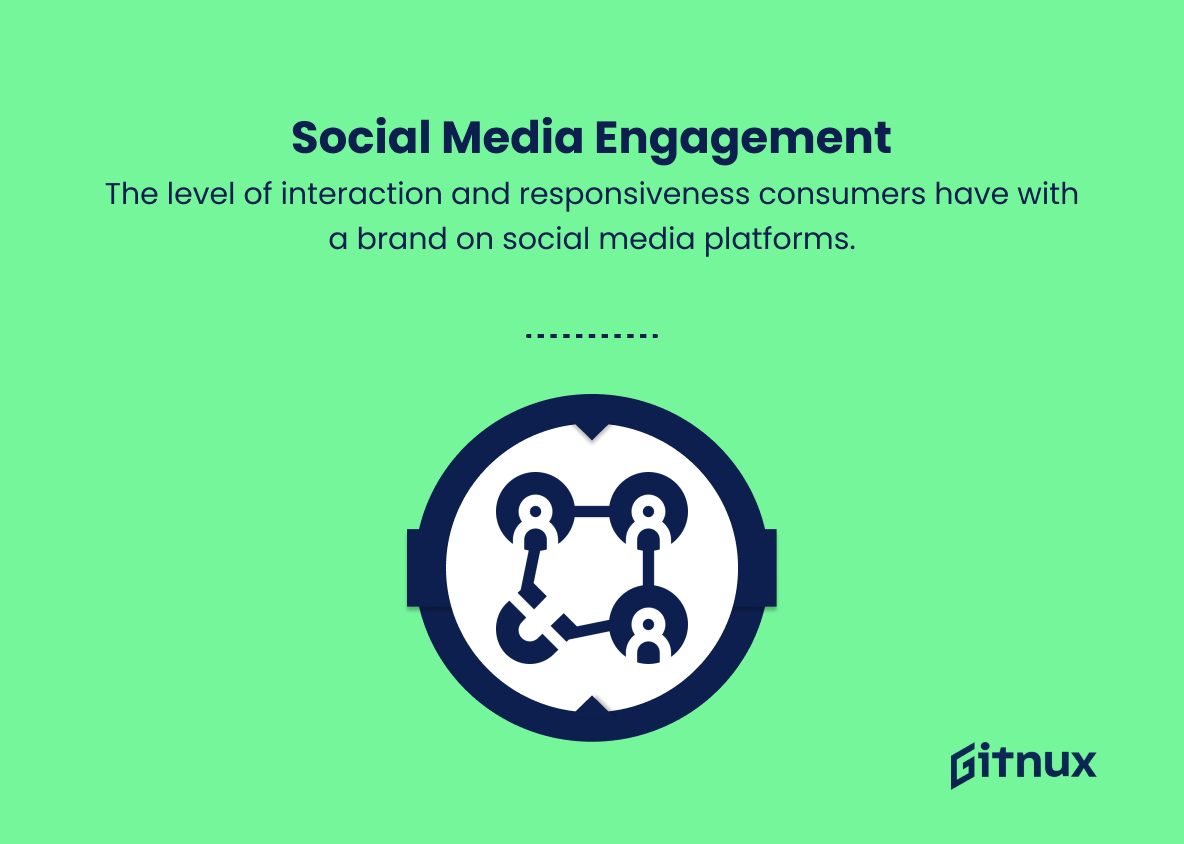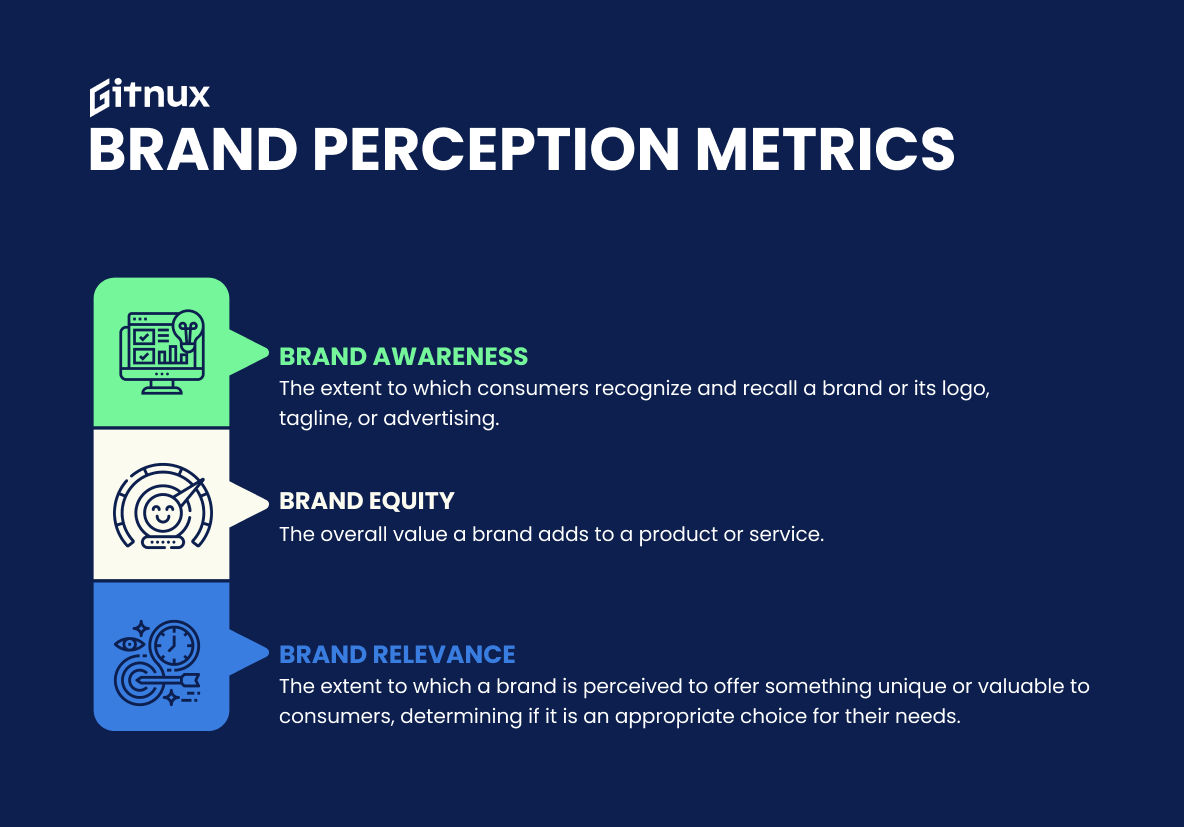In today’s rapidly evolving marketplace, a strong brand perception is critical for businesses to maintain a competitive edge and foster customer loyalty. Brand perception metrics, which quantify the way consumers view and interact with a brand, are invaluable tools for measuring the effectiveness of marketing strategies and guiding future endeavors.
In this thought-provoking blog post, we will explore the various dimensions of brand perception metrics, from awareness and affinity to recall and sentiment. We will also delve into best practices for leveraging these metrics to make informed decisions, refine messaging, and ultimately, bolster the brand’s overall reputation and market standing. Join us on this insightful journey to better understand the power of brand perception metrics and unlock the full potential of your brand.
Brand Perception Metrics You Should Know
1. Brand Awareness
The extent to which consumers recognize and recall a brand or its logo, tagline, or advertising. High brand awareness implies that the brand is well-known and has a strong presence in consumers’ minds.
2. Brand Equity
The overall value a brand adds to a product or service. It includes brand associations, perceived quality, brand loyalty, and the positive or negative feelings towards the brand.
3. Brand Relevance
The extent to which a brand is perceived to offer something unique or valuable to consumers, determining if it is an appropriate choice for their needs.
4. Brand Preference
The degree to which consumers prefer a brand over other competing brands. A higher brand preference means consumers are more likely to choose that brand over others.
5. Brand Trust
The customer’s trust in a brand’s ability to deliver on its promises and meet expectations. High trust suggests consumers believe the brand is reliable, dependable, and committed to maintaining a positive relationship with them.
6. Brand Loyalty
The degree to which consumers are devoted to a brand, continuing to buy from or support it despite other available alternatives. Loyal customers are more likely to repeat purchases, recommend the brand to others, and remain satisfied with their experiences.
7. Brand Associations
The mental connections consumers make between a brand and its attributes, benefits, or related elements, such as images, emotions, or experiences. Strong brand associations enable consumers to quickly recall and understand the brand’s key messages.
8. Brand Perception
The overall impression consumers have of a brand, influenced by their experiences, advertising, word of mouth, and other factors. This perception informs their expectations, beliefs, and feelings towards the brand.
9. Net Promoter Score (NPS)
A measure of customer satisfaction and loyalty, calculated by identifying the percentage of customers who are “promoters” (those who would recommend the brand to others) and subtracting the percentage of “detractors” (those who would not).
10. Customer Satisfaction
The degree to which consumers are happy with their interactions and experiences with a brand, often determined through surveys, reviews, or customer feedback.
11. Purchase Intent
The likelihood that consumers will choose to buy from a specific brand in the future, often measured through survey questions or historical purchasing data.
12. Brand Advocacy
The extent to which consumers actively recommend, support, or defend a brand to others. This may include sharing positive experiences or refuting negative perceptions of the brand.
13. Share of Voice (SOV)
The percentage of total advertising, conversation, or media coverage dedicated to a brand relative to its competitors. A higher SOV suggests a stronger presence in the marketplace and a higher influence on consumers.
14. Social Media Engagement
The level of interaction and responsiveness consumers have with a brand on social media platforms. This may include likes, comments, shares, and follows, which help determine the brand’s impact on the target audience.
Brand Perception Metrics Explained
Brand perception metrics are crucial for understanding and measuring different aspects of a brand’s performance and image. They encompass various factors, such as brand awareness, which reflects the brand’s visibility in consumers’ minds; brand equity, which signifies the overall value a brand adds to its products or services; and brand relevance, which gauges the brand’s ability to meet consumer’s needs. Additionally, brand preference, trust, and loyalty are essential components that depict consumer dedication and confidence in a particular brand.
Metrics like brand associations and overall perception play a considerable role in shaping a consumer’s impressions and fostering lasting relationships. Tools such as Net Promoter Score help measure customer satisfaction and loyalty, while customer satisfaction, purchase intent, and brand advocacy outline consumers’ happiness, future buying decisions, and active support for a brand. Share of voice represents a brand’s presence in the marketplace and determines its competitive position. Finally, social media engagement evaluates a brand’s impact on its target audience through online interactions. Collectively, these metrics provide invaluable insights into a brand’s overall image and market standing.
Conclusion
In conclusion, understanding and effectively analyzing brand perception metrics is essential for businesses to stay connected to their customers, remain competitive in the market and drive growth. Paying close attention to key indicators of brand perception and continuously evolving as per consumer demands will help businesses achieve better brand positioning, brand loyalty, and brand advocacy.
As these metrics continually change, businesses must consistently monitor their brand’s perception to stay ahead of the curve and secure their place in the hearts and minds of their target audience. Investing time and resources into brand perception metrics is a smart strategy that will ultimately result in better brand awareness, higher customer retention, and increased revenue.
